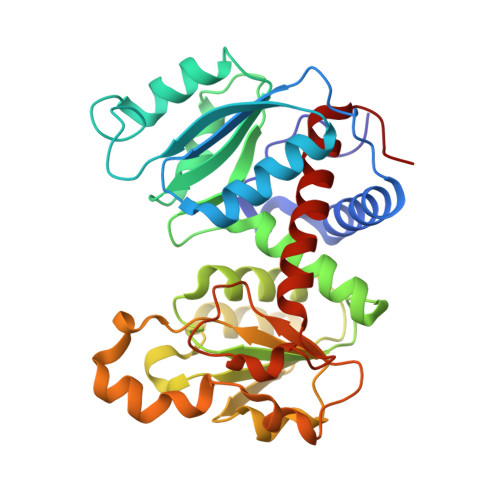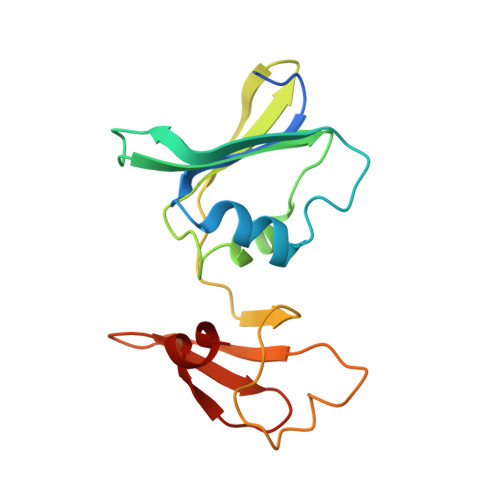Metal Ion Involvement in the Allosteric Mechanism of Escherichia coli Aspartate Transcarbamoylase.
Cockrell, G.M., Kantrowitz, E.R.(2012) Biochemistry 51: 7128-7137
- PubMed: 22906065
- DOI: https://doi.org/10.1021/bi300920m
- Primary Citation of Related Structures:
4FYV, 4FYW, 4FYX, 4FYY - PubMed Abstract:
Escherichia coli aspartate transcarbamoylase (ATCase) allosterically regulates pyrimidine nucleotide biosynthesis. The enzyme is inhibited by CTP and can be further inhibited by UTP, although UTP alone has little or no influence on activity; however, the mechanism for the synergistic inhibition is still unknown. To determine how UTP is able to synergistically inhibit ATCase in the presence of CTP, we determined a series of X-ray structures of ATCase·nucleotide complexes. Analysis of the X-ray structures revealed that (1) CTP and dCTP bind in a very similar fashion, (2) UTP, in the presence of dCTP or CTP, binds at a site that does not overlap the CTP/dCTP site, and (3) the triphosphates of the two nucleotides are parallel to each other with a metal ion, in this case Mg(2+), coordinated between the β- and γ-phosphates of the two nucleotides. Kinetic experiments showed that the presence of a metal ion such as Mg(2+) is required for synergistic inhibition. Together, these results explain how the binding of UTP can enhance the binding of CTP and why UTP binds more tightly in the presence of CTP. A mechanism for the synergistic inhibition of ATCase is proposed in which the presence of UTP stabilizes the T state even more than CTP alone. These results also call into question many of the past kinetic and binding experiments with ATCase with nucleotides as the presence of metal contamination was not considered important.
Organizational Affiliation:
Department of Chemistry, Merkert Chemistry Center, Boston College, Chestnut Hill, MA 02467, USA.



















